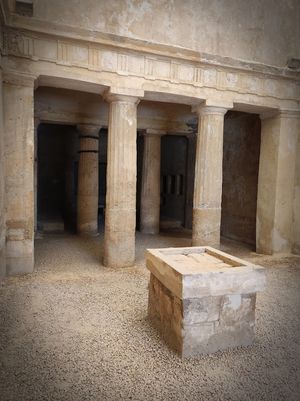CULTURAL ENTANGLEMENT
Funerary art as cultural entanglement
Cultural entanglement implies mutual correlation and at least two types of connection: explicit and transparent, hidden and implicit. Explicit is by its nature self-evident and discernable, while implicit must be searched for and discovered by removing layers that suppress it. Entanglement is strongly related to cultural identity, and since culture is constant and ever-changing, entanglement cannot disappear or be disregarded. This section aims to discuss the process of multicultural adjustment and transformation that took place in the Eastern Mediterranean from the 4th to the 1st c. BCE as this is expressed or negotiated in funerary art. Such a transcultural perspective can help to reconstruct, as far as plausible, the relationship between the product and its agents: makers, owners and/or users; to define function, symbolic use, social styles of acting and doing and hence agency of funerary art as determined by context; to determine how funerary art is re-conceptualized, re-elaborated and integrated through time and within varying cultures. Thus, this part of the Program aims to explore how the interplay between local, regional and inter-national cultural and intellectual biases may inspire creative tensions in funerary art; to challenge binary views of East-West relations and the standard imperialist-colonial frameworks; to offer a critique of both established modernizing conceptions of cultural development and nationalist, nativist frameworks based on the values of specific political endeavors.
An on-site Workshop on this theme will take place in Alexandria during the third year of the project (June 2026).

Support for this program is Provided by the Getty Foundation as part of its Connecting Art Histories initiative.

